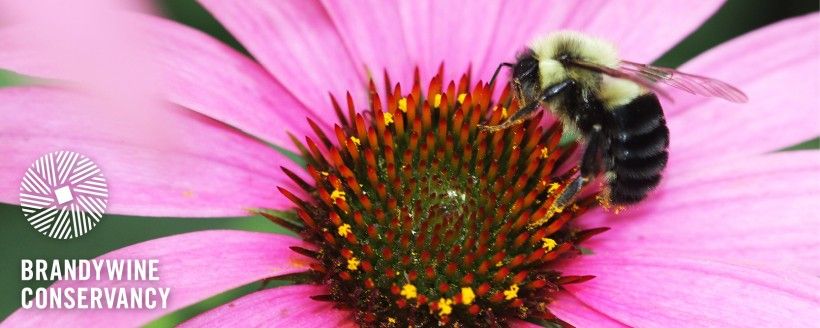
Directors' Report
Dear Fellow Conservationists,
Summer is a season of vibrancy, and at the Brandywine Conservancy it marks a time of both growth and transformation. With the season in full swing, we’re thrilled to share not only the latest stories and resources in this issue of Environmental Currents, but also an exciting new chapter in our leadership. We are thrilled to share that Stephanie was promoted to the newly created role of Chief Impact Officer for the entire Brandywine organization, while Grant was elevated to become the singular Director of the Conservancy.
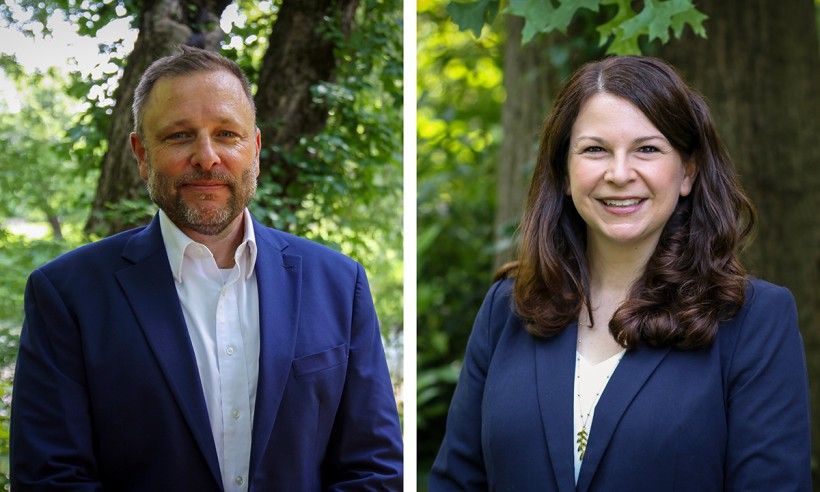
In her new role, Stephanie will now oversee all public engagement efforts across the entire organization, including the robust educational programming already offered by the Museum and Conservancy through their individual programs, as well as enhanced art and nature programming. In addition, she will oversee special events, rentals, and related earned revenue opportunities, as well as the Brandywine’s horticultural staff, developing new opportunities to immerse the public in the gardens, trails and meadows of the organization’s broader Chadds Ford campus. Combining these teams under one centralized department will allow for more strategic and collaborative work, as well as deeper engagement with the organization’s dual mission.
As the singular Director of the Brandywine Conservancy, Grant will now oversee all Conservancy program areas—including conservation, stewardship, municipal assistance, and community services—working to amplify our impact and strengthen our bonds with landowners and communities. In this role, he will continue to expand the Conservancy’s presence and efforts to protect and conserve the land, water, natural, historic and cultural resources that define this region, while also providing strategic guidance and leadership for the organization to further its mission. You can read more about both of these leadership changes here.
With these changes, this will be our final joint letter as Co-Directors of the Brandywine Conservancy as we now step into these newly defined roles that expand our impact and advance the organization’s mission in exciting new ways. It has been a joy and privilege to serve together as Co-Directors over the past few years. As we continue our work in these new capacities, we remain united in our commitment to the Brandywine's unique dual mission of art and nature.
Also in this issue, you’ll find a variety of stories that reflect the depth and breadth of our mission-based work. We’re excited to share a Q&A with Matt Edmond, the new Executive Director of the Chester County Planning Commission and a longtime Brandywine partner. We spotlight the importance of native bees with practical gardening tips from Brandywine's new Native Garden Hub website, along with a deep dive into the ecological value of these crucial pollinators. You’ll also find information on our fifth annual Pennsylvania Pollinator Photo Challenge, a not-so-sweet Invasive Species Spotlight on chocolate vine, and timely water safety tips for enjoying the Brandywine responsibly this summer.
Other features include updates from our Brandywine Flood Study, new planning projects like the Upper Uwchlan Comprehensive Plan, and a new Municipal Resource Toolkit on Agricultural Best Management Practices (BMPs). Plus, check out the latest improvements to the Brandywine Creek Greenway App—now even more accessible in both English and Spanish—to help you explore the region’s parks and trails.
Thank you, as always, for being part of our conservation community. We look forward to all that’s ahead and to continuing this important work together—with renewed vision, steadfast purpose, and the shared hope of a thriving future for the Brandywine.
With gratitude,
— Stephanie and Grant
Stephanie Armpriester, Chief Impact Officer, Brandywine Conservancy & Museum of Art
Grant DeCosta, Director, Brandywine Conservancy
Water Safety on the Brandywine
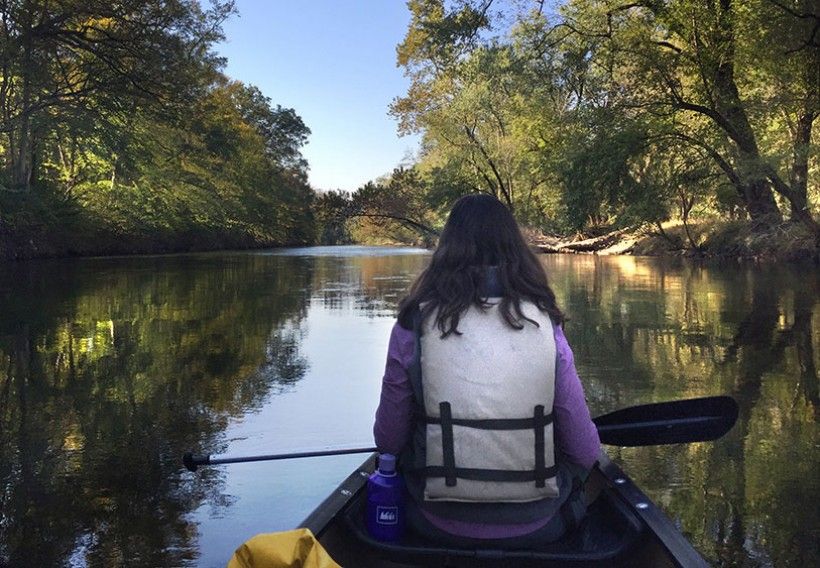
With the arrival of summer comes an increase in recreational use of the Brandywine as many look to escape the summer heat and spend time with friends and family on the water. However, summer can also bring intense rainstorms that can quickly change river conditions and present significant health and safety concerns to those on the river. Not only can these storms rapidly change the depth and rate of flow, which can create dangerous and unpredictable water conditions for paddling or floating, but they can also quickly transfer pollutants and debris from adjacent lands into the water, which may pose threats to our health and safety.
To aid you in having your best day on the river, the Brandywine Conservancy has put together a quick guide to ensure your next trip on the Brandywine is the best it can be. Read on for a list of things you should know before you go, including a list of public sites that permit access and egress from the river.
Click here to read more
Invasive Species Spotlight: Chocolate Vine
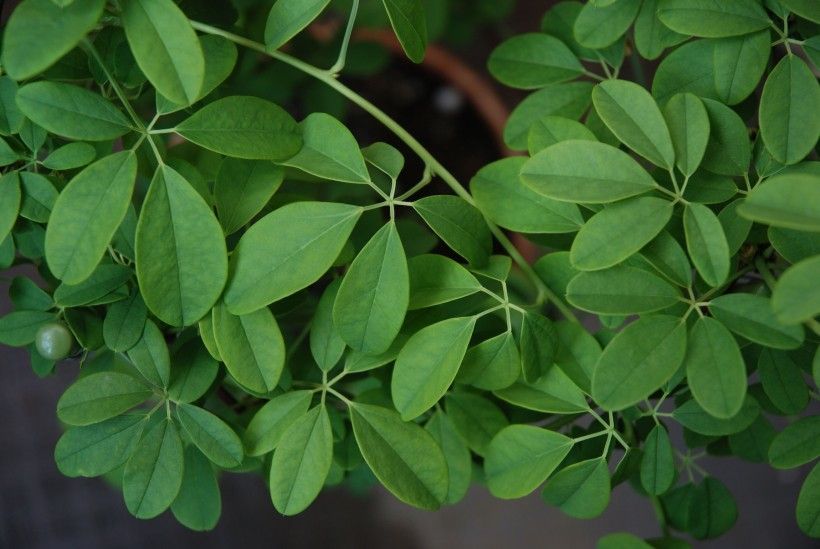
Chocolate vine (Akebia quinata), also known as five-leaf chocolate vine or five-leaf akebia, is a vigorous, invasive perennial vine. Originally from eastern Asia, it was introduced to the United States as an ornamental plant in 1845. This invasive can grow up to 40 feet in a single season, is shade-tolerant, and forms dense mats that kill native understory plants and prevents native seeds from germinating and growing. The vines also climb small trees and shrubs, smothering them. While still in the early stages of its invasive spread in the U.S., read on to learn how to identify this invasive—and how to aid efforts to eradicate it by reporting any sightings.
Click here to read more
The Importance of Native Bees in Pennsylvania
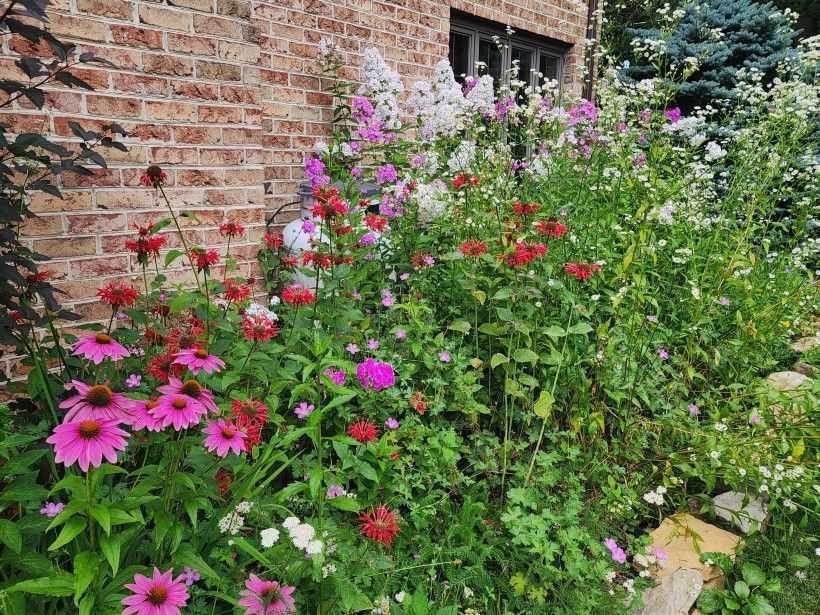
When most people think of bees, the image that comes to mind is likely the European honeybee (Apis mellifera). But while honeybees are crucial pollinators and support agriculture globally, they are not native to North America. In Pennsylvania alone, over 400 species of native bees quietly work behind the scenes, performing the critical ecological service of pollination, doing their part in maintaining the health of local ecosystems, supporting agriculture, and preserving biodiversity. Understanding the importance of native bees in Pennsylvania is crucial, especially as they face mounting threats from habitat loss, pesticide use, climate change, and competition from non-native species.
Click here to read more
Seasonal Blooms for Native Bees
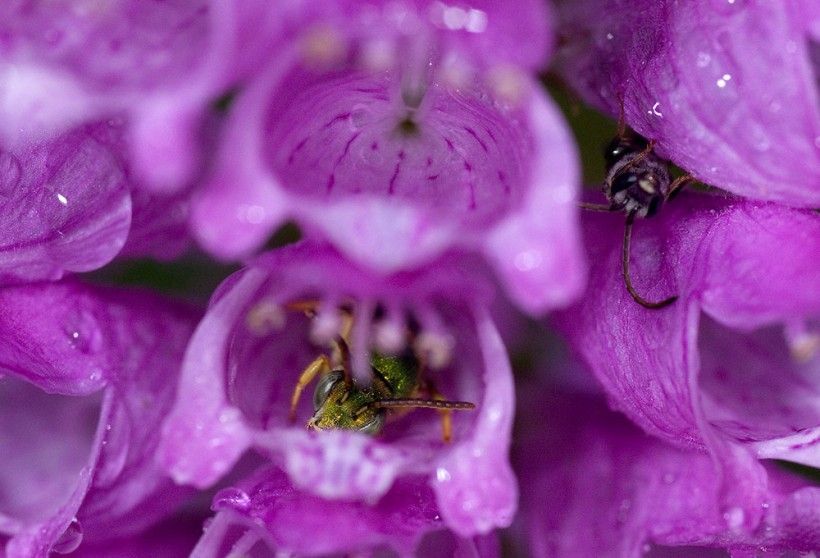
Interested in creating a more buzzworthy garden to support native bees? One way to start is by incorporating native plants with a variety of bloom times. Our latest blog on the Brandywine's new Native Garden Hub website has all the tips on how to strategically tailor your native plant selections and landscaped spaces to better meet the needs of native bee species and provide a constant supply of food for these hardworking pollinators.
Click here to read more
5th Annual Pennsylvania Pollinator Photo Challenge
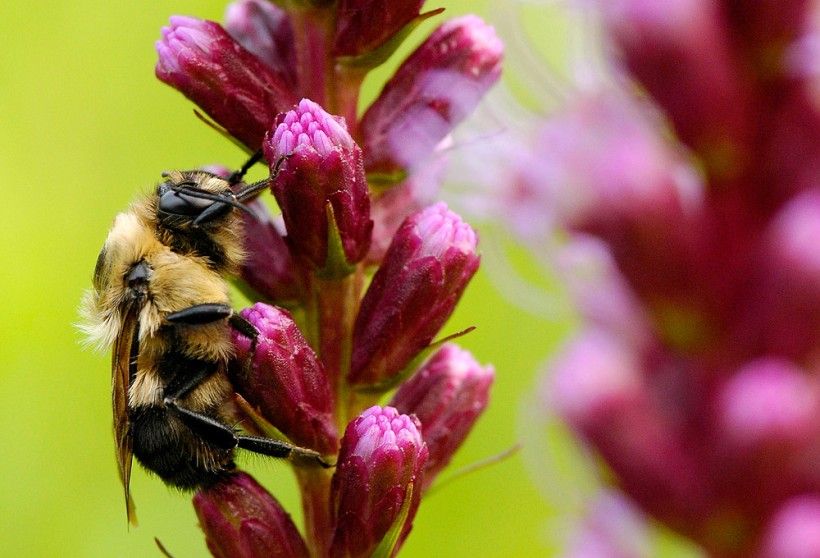
Do you have a great action shot of bees or other pollinators found in Pennsylvania? Now through August 3, 2025, our fifth annual Pennsylvania Pollinator Photo Challenge is underway, hosted by the Brandywine's Penguin Court Preserve and the Westmoreland Pollinator Partners—both based in Westmoreland County, PA.
To enter, submit your best photos of pollinators found and photographed in Pennsylvania, such as bees, beetles, butterflies, flies, hummingbirds, moths, or wasps in any of their life stages. Open to the public, this contest accepts submissions from people of all ages, with cash prizes awarded for first, second and third place. New this year will also be a contest category dedicated to native bees (honey bees are not native to the USA), in any of their life stages.
Click here to learn more and enter
Q&A: Matt Edmond, Chester County Planning Commission's New Executive Director
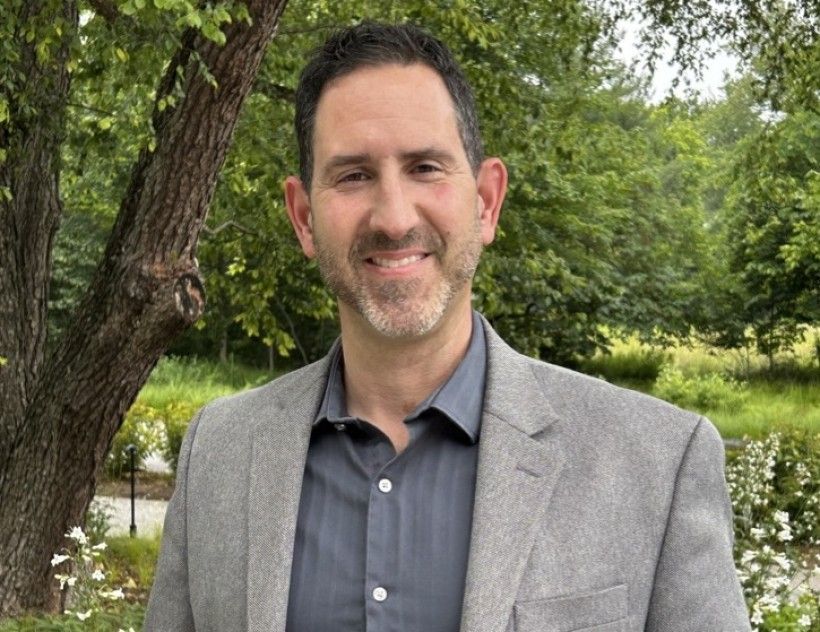
The Chester County Planning Commission has long been a valued partner of the Brandywine Conservancy and a dedicated advocate for land conservation, outdoor recreation, trails, and community planning initiatives. We recently had the chance to sit down with their new Executive Director, Matt Edmond, who previously spent 20 years working at the Montgomery County Planning Commission. Read on to learn what inspired Edmond to pursue a career in local planning, his goals for the future of the county, and ways everyday citizens can get involved.
Click here to read more
Brandywine Flood Study
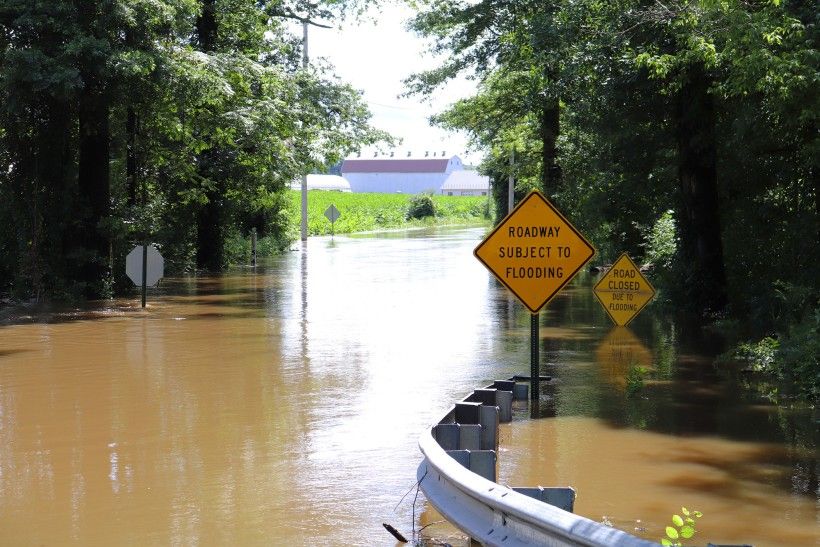
Following an extensive study period, with a series of public outreach meetings and community engagement efforts, the final report of the Brandywine Flood Study is now available.
Now that the Brandywine Flood Study is complete, there is work to do to implement the study’s recommendations so that the watershed and its residents in both states are better prepared, protected, and equipped to rebound from future severe flooding events. The recommendations include both collaborative action and individual stakeholder projects. Achieving full implementation of this study’s potential will require engagement and collaboration from stakeholders throughout the watershed.
Brandywine Native Garden Hub
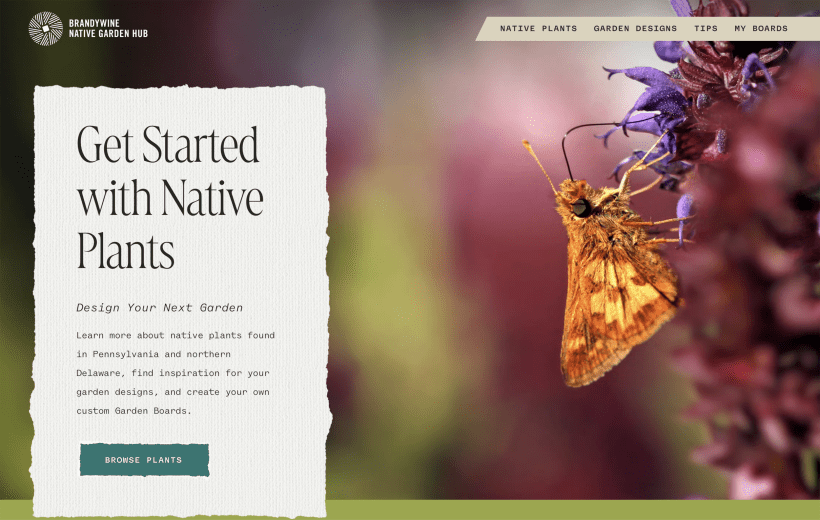
Designed to inspire gardeners of all levels, the Brandywine Native Garden Hub is your new go-to guide for getting started with native plants in Pennsylvania and northern Delaware. Created by the Brandywine Conservancy, this free, interactive website helps you find, save, and learn more about native plants perfect for your home. Browse through more than 250 native plant profiles or filter your searches by growing conditions, attributes, and other benefits. To help you visualize and plan, you can also save your favorite plants to personalized Garden Boards and browse through a suite of educational resources to help enhance your gardening success.
Brandywine Creek Greenway App
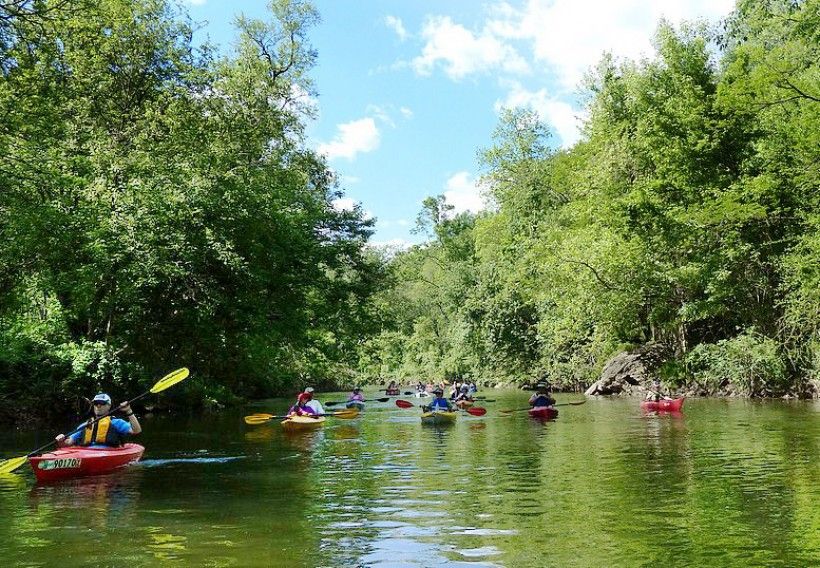
Did you know that 70% of Chester County residents live within one mile of a park or trail? Find new ones or visit old favorites through the recently updated Brandywine Creek Greenway App, now available on iOS and Android devices for both English and Spanish speakers. Download it on the App Store or get it on Google Play.
Toolkit Spotlight: Agricultural Best Management Practices

This past spring, the Conservancy proudly launched its new Municipal Resource Toolkits with the release of eleven comprehensive guides focused on key planning topics ranging from general planning and land preservation to recreation and transportation infrastructure.
As we continue to build more toolkits, we'll be spotlighting them in each issue of Environmental Currents. First up, we're highlighting our Agricultural Best Management Practices toolkit and technical bulletin which detail a set of strategies, methods, and technologies implemented by farmers and land managers to minimize the environmental impact of agricultural activities while also improving the efficiency of farming operations.
Upper Uwchlan Township Adopts Updated Comprehensive Plan

Upper Uwchlan Township recently adopted their updated Comprehensive Plan with the assistance of the Brandywine Conservancy. The adoption is the culmination of over two years of hard work by a dedicated group of municipal volunteers, staff, and consultants, and replaces their 2014 Plan, also prepared by the Conservancy. The Comprehensive Plan Update incorporates several planning documents where Brandywine acted as a lead or sub-consultant on, including the Village Concept Plan, Village Design Guidelines (prepared by sub-consultant Richard Grubb and Associates), the Sustainable Communities Assessment, and the Active Transportation Plan (prepared by Bowman).
Overall, the plan offers a blueprint for Upper Uwchlan to preserve its history, provide enhanced connectivity to local and regional trails, embrace its diverse community, celebrate its heritage, ensure resilience now and in the future, and enhance stewardship of its historic and natural resources. The Brandywine wishes to congratulate Upper Uwchlan on this impressive and expansive planning effort and looks forward to continuing to work with the municipality in implementing the goals and recommendations contained in the Plan.